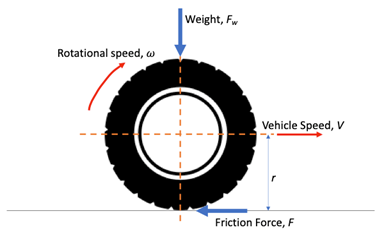NCDOT manages the
annual Highway Safety Improvement Program to address crashes in the following
emphasis areas: lane departure, frontal impact/intersection, and pedestrian and
bicycle crashes in an effort to reduce crashes by the installation of safety improvement
countermeasures at locations with patterns of correctable crashes.
Lane
departure crash patterns can be identified in various ways with one of the
methodologies being an increased frequency of lane departure crashes and/or
crash rates during wet road conditions.
Lane departure crashes and crash rates may increase when the surface is
wet because skid resistance can be affected and reduced under these conditions.
Recent studies have shown that friction and, more notably macrotexture, are
negatively affected when the pavements are newly overlaid, but did not provide the
NCDOT with a pavement friction and macrotexture performance model or
performance thresholds.
This research study has used a combination of field
experiments, laboratory experiments, and statistical analysis to achieve three
objectives; 1) characterize friction and texture performance models for North
Carolina roadways, 2) propose friction and texture performance thresholds, and
3) identify asphalt mixture compositional factors that affect the
as-constructed macrotexture and friction.

Friction concept schematic
The objectives were met using a
combination of field and laboratory friction and texture experiments. The performance models developed in this research were
shown to accurately predict in-service friction and texture and were validated
using completely independent measurements. To define thresholds, pavement
segments were grouped according to their available friction or texture and then
the relationship between the aggregated crash rates and texture/friction were used
to identify values where crash rates showed a marked increase.
On the basis of
this analysis, the research team recommends the following investigatory and
intervention thresholds: macrotexture investigatory level: 0.80 mm, macrotexture
intervention level: 0.6 mm, friction investigatory level: 0.57 for
non-interchanges and 0.65 for interchanges, and friction intervention level
(specific to Moventor BV-11 equipment at 60-mph): 0.43 for non-interchanges and
0.49 for interchanges. These thresholds are specific
for the devices used; in the case of texture the AMES AccuTexture 100 and for
friction the Moventor BV-11 at 60-mph.
The sites in this research were
primarily high speed, controlled access roadways and so these recommendations
are most applicable to similar types of roadways. Data from the North Carolina
highway network was combined with these threshold values and predictions from the
friction and texture performance models to evaluate the benefit-cost
implications from deploying a set of maintenance and rehabilitation strategies
to address friction and texture problems.
While the precise cost implications
varied by the maintenance scenario evaluated or the interest rate used, all the
combinations showed a benefit-cost ratio greater than one.
